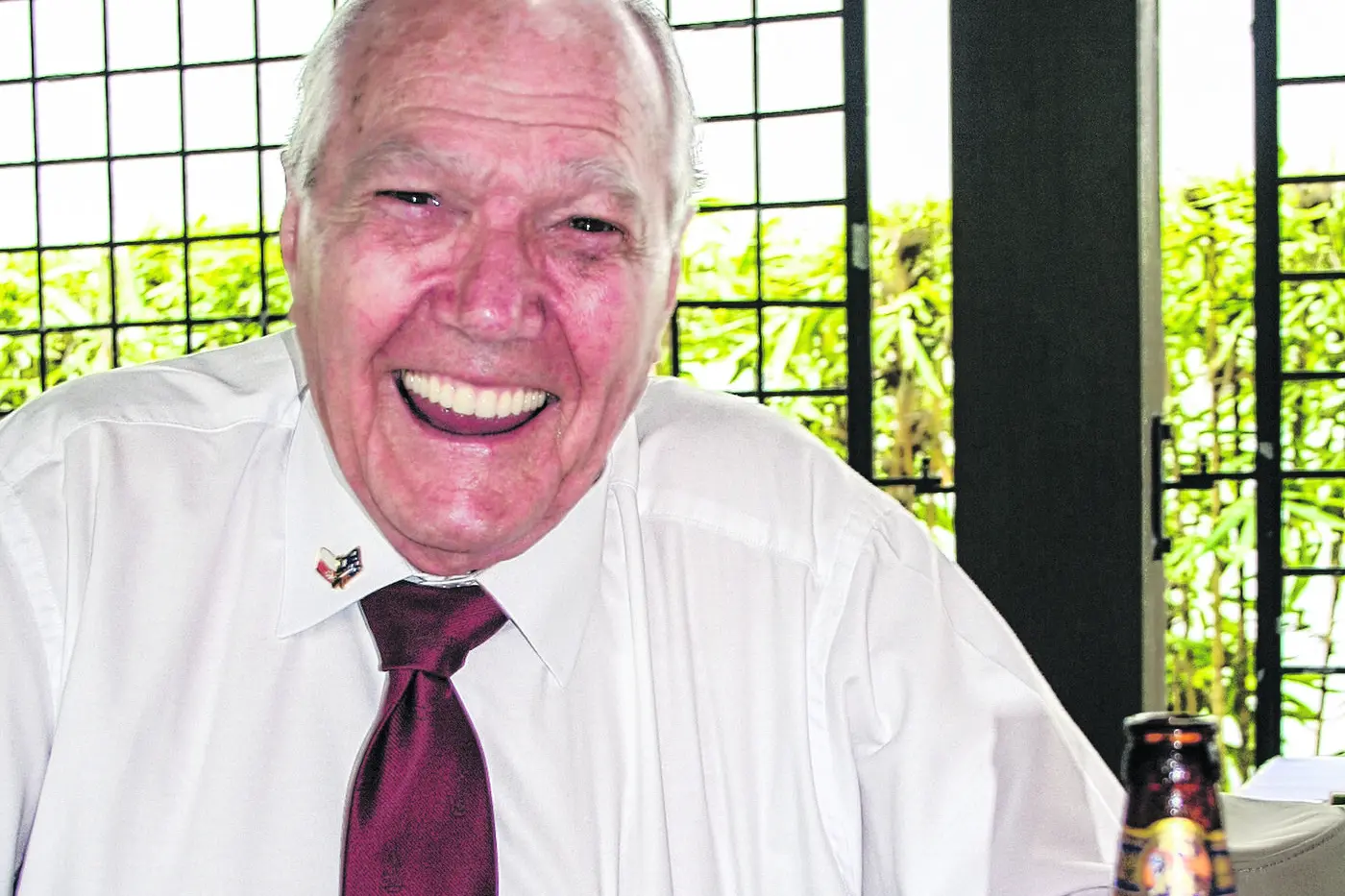PHOTO
This year marks the 80th anniversary of Victory in the Pacific (VP). On VP Day, August 15, the nation remembers Australia’s war efforts from 1942-45 in the Pacific region, including Singapore, Borneo, Malaya, New Guinea and New Britain. Going home meant different things for different soldiers, writes historian and author STUART LLOYD.
•••
In World War 2, over 22,000 Aussies were taken as prisoners of war, mostly in Singapore. They endured a hellish 3.5 years of captivity under the Japanese, with around 8000 dying in captivity. Then came August 15, 1945: the Japanese surrender, the end of the war. Finally!
Capt Hugh Pilkington, who survived the rigours of Hellfire Pass (north of the bridge on the River Kwai), was back in the Officers' Quarters at Changi, Singapore, where there were three illegal wireless sets in operation.
"At about 2.30 am on the morning of August 11, I was asleep on my bed on the little balcony of our coolie quarter when an undue commotion from the Australian officers’ hut over the road woke me up.
"Intrigued by the noise from the Australians, I walked across and looked in to see them feverishly sorting their belongings, and, when I asked what it was all about, I was told, ‘We cannot tell you but you will hear soon.'
"At 7.45 am when our Colonel Commanding woke up, I suggested to him that the Australians had some news. Colonel Harris went across and came back a few minutes later: 'Gentlemen they have capitulated, but the Japanese themselves have not yet been informed'.
"No one spoke for several minutes, and then we all made a concerted rush for our little hoards of dried beans, fish, etc. and made fires to cook them on. By now we were really starving and food dominated our thoughts. 'At last' and 'Thank God' were the only expressions heard."
Going home meant different things for different soldiers.
One of those lucky to make it home from the Thai-Burma Death Railway was Lance Sgt Cyril Gilbert of the Australian 8th Division, who'd had a torrid time in the worst upper reaches of the railway, where he 'celebrated' his 19th birthday with one sardine.
On his release, back in Queensland, it was a different matter.
"For two years it was wine, women and song, and I never sang a note!" he says, as he nurses another cold Tiger Beer on a visit to Singapore. Around the house, he said, "I would always be looking in the fridge for more food, having meals in between meals in between meals."
What about revenge on their captors when they were freed? Gunner Dick Lee of the Royal Artillery was part of a work gang around his camp in Singapore digging "tunnels" for the Japanese, which turned out to be intended as their own graves, because of a plan to dispose of the POWs when the surrender came.
Lee said, "Yeah, I would love to have got stuck into that little bastard who give me a right doing with a bamboo stick, because I had a bleedin’ sore back for weeks. Thought he’d broken my back, little bastard. But then you quickly forget about all this wanting revenge, you were so pleased to be free again."
Many POWs were still up in Siam (now Thailand) at camps on the Death Railway.
“Some in my hut went off and got hold of Takamine, the guard who’d bashed my face a few days earlier," said Gunner Fergus Anckorn, who – earlier in the war – had been bombed by a Japanese plane.
"They said, 'Right, come on, kill him now.' Someone passed me a spade and said, 'Go on, knock off his head, and we’ll bury him under the bed shelf. No one will know or care.' But I told them if we did that we’d be the same as they were. I said I didn’t want to kill him – I just wanted to go home and forget everything. I wrote to my parents: 'I am free – free – free! After three and half years'."
In those days, there was no counselling, no diagnosis as post- traumatic stress disorder. Everyone was told not to talk about it and just get on with life.
Worse for those from the Far East was that there were long delays in getting them back home, compared to those from the European theatre, where the German surrender had come earlier in May, 1945.
Many POWs – listed ‘missing presumed dead’ – arrived home to find their girlfriends had married someone else, compounding their misery and detachment.
In other more confusing cases, one POW’s fiancée had two children with another man but was still "waiting" for him, and another POW’s girlfriend had married his father!
Proving that the suffering never ends with the surrender.
“People who read history always talk about learning the lessons, but so help me God when the situation arises they forget about the lessons, ” said Australian Rear-Admiral Guy Griffiths, who was aboard the HMS Repulse when it was bombed and sunk off Malaya at the very start of the war.
“Every time I go to a veterans gathering I think how futile conflict is. You lose a lot of people. In the end, what did that all solve that couldn’t have been solved with talking or diplomacy or different understanding... and it goes on till today, right now. Conflict is a futile pastime.”
To celebrate the 80th anniversary of the surrender and the end of WW2, a PDF download 'The Bleedin' War's Over!' (15 pages of first-hand reflections by Allies and Japanese on the surrender) is available free. Go to www.stuartlloyd.net





